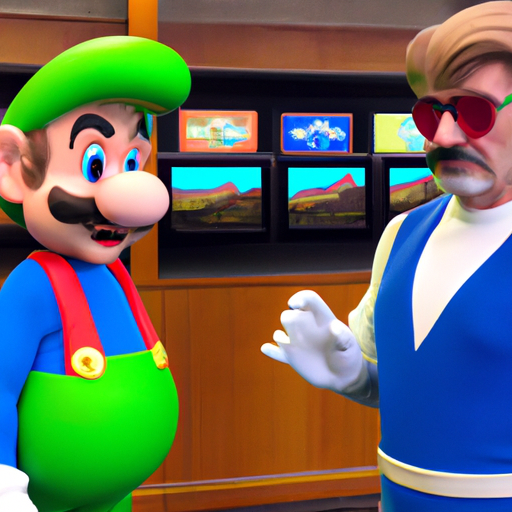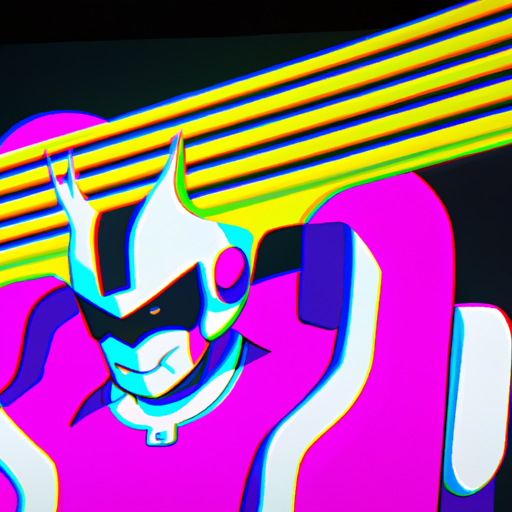
-
Table of Contents
- Graphic Design for Video Games: Character and World Graphics
- The Importance of Graphic Design in Video Games
- The Process of Creating Compelling Character and World Graphics
- 1. Concept Art
- 2. 3D Modeling and Texturing
- 3. Animation
- 4. Lighting and Effects
- 5. User Interface Design
- The Role of Graphic Designers in Game Development
- Successful Examples and Case Studies
- 1. The Legend of Zelda: Breath of the Wild
- 2. Overwatch
- 3. Cuphead
- Summary
Graphic Design for Video Games: Character and World Graphics

Video games have become a multi-billion dollar industry, captivating millions of players around the world. One of the key elements that make a game visually appealing and immersive is its graphic design. In this article, we will explore the importance of graphic design in video games, with a specific focus on character and world graphics. We will delve into the process of creating compelling visuals, discuss the role of graphic designers in game development, and highlight some successful examples and case studies. Let’s dive in!
The Importance of Graphic Design in Video Games
Graphic design plays a crucial role in video games as it sets the visual tone and atmosphere of the game. It helps create a captivating and immersive experience for players, drawing them into the game world. Good graphic design can enhance storytelling, evoke emotions, and make the game more enjoyable and memorable.
When it comes to character and world graphics, the design choices can greatly impact the player’s connection with the game. Characters are often the main focal point of a game, and their design can influence how players relate to them. World graphics, on the other hand, create the environment in which the game takes place, setting the mood and providing context for the gameplay.
The Process of Creating Compelling Character and World Graphics
Creating compelling character and world graphics for video games is a complex process that involves several stages. Let’s take a closer look at each of these stages:
1. Concept Art
The first step in creating character and world graphics is the development of concept art. Concept artists work closely with game designers to bring their ideas to life. They create sketches and digital paintings that capture the essence of the characters and the game world. These initial concepts serve as a foundation for the rest of the design process.
2. 3D Modeling and Texturing
Once the concept art is approved, the next step is to create 3D models of the characters and the game world. 3D modelers use specialized software to sculpt and shape the characters, giving them depth and dimension. Texturing artists then add color, texture, and detail to the models, making them visually appealing and realistic.
3. Animation
Animation breathes life into the characters, making them move and interact with the game world. Animators use motion capture technology or hand-keyframe animations to create realistic movements and actions. This stage is crucial in conveying the personality and emotions of the characters.
4. Lighting and Effects
Lighting and effects play a significant role in creating atmosphere and enhancing the visual experience. Lighting artists use techniques such as dynamic lighting and global illumination to simulate realistic lighting conditions. Effects artists add special effects like explosions, fire, and weather conditions to make the game world more dynamic and immersive.
5. User Interface Design
User interface (UI) design is an essential aspect of graphic design in video games. It involves creating intuitive and visually appealing menus, icons, and HUD (heads-up display) elements that allow players to navigate the game and access important information. A well-designed UI enhances the overall user experience and makes the game more accessible.
The Role of Graphic Designers in Game Development
Graphic designers play a vital role in game development, working closely with other members of the development team to create visually stunning and cohesive game experiences. Here are some key responsibilities of graphic designers in game development:
- Collaborating with game designers and concept artists to develop visual concepts and styles for characters and game worlds.
- Creating high-quality 2D and 3D assets, including character models, environment assets, textures, and UI elements.
- Ensuring consistency and visual coherence throughout the game by adhering to established art direction and style guides.
- Optimizing graphics for different platforms and performance requirements.
- Iterating and refining designs based on feedback from the development team and playtesting.
Graphic designers need a strong understanding of art fundamentals, such as composition, color theory, and anatomy. They also need to be proficient in industry-standard software tools like Photoshop, Illustrator, and 3D modeling software.
Successful Examples and Case Studies
There are numerous examples of video games that have achieved great success through their exceptional character and world graphics. Let’s explore a few notable examples:
1. The Legend of Zelda: Breath of the Wild
The Legend of Zelda: Breath of the Wild, developed by Nintendo, is praised for its stunning art style and attention to detail. The game features a vast open world with diverse landscapes, each meticulously designed to create a sense of wonder and exploration. The character designs are unique and memorable, capturing the essence of the game’s fantasy setting.
2. Overwatch
Overwatch, developed by Blizzard Entertainment, is known for its vibrant and diverse cast of characters. Each character has a distinct visual design that reflects their personality and abilities. The game’s world graphics are equally impressive, with detailed maps and environments that enhance the gameplay experience.
3. Cuphead
Cuphead, developed by Studio MDHR, stands out for its hand-drawn, 1930s-inspired art style. The game’s characters and world graphics are reminiscent of classic cartoons, creating a unique and nostalgic visual experience. The attention to detail in the animation and art direction has earned Cuphead critical acclaim and a dedicated fan base.
Summary
Graphic design plays a crucial role in video games, particularly in the creation of character and world graphics. The process of creating compelling visuals involves concept art, 3D modeling and texturing, animation, lighting and effects, and user interface design. Graphic designers play a vital role in game development, collaborating with other team members to create visually stunning and cohesive game experiences. Successful examples like The Legend of Zelda: Breath of the Wild, Overwatch, and Cuphead demonstrate the impact of exceptional graphic design on the overall game experience. By understanding the importance of graphic design and investing in talented designers, game developers can create visually captivating and immersive worlds that leave a lasting impression on players.
